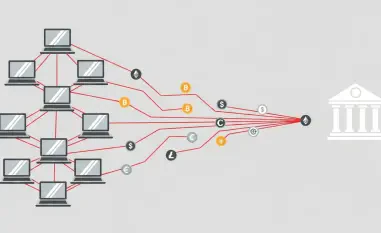I’m thrilled to sit down with Malik Haidar, a renowned cybersecurity expert whose extensive experience spans combating cyber threats and hackers at multinational corporations. With a deep background in analytics, intelligence, and security, Malik uniquely blends business perspectives into robust cybersecurity strategies. Today, we’ll dive into a fascinating trend in the cyber threat landscape—attackers “patching” vulnerabilities post-exploitation—and explore its implications for cloud-based systems and open-source software. Our conversation will touch on specific vulnerabilities in tools like Apache ActiveMQ, innovative attack techniques, and the evolving strategies threat actors use to maintain access while evading detection.
Can you walk us through the recent trend of threat actors “patching” vulnerabilities after exploiting them, and what this means for cybersecurity?
Absolutely, Olivia. This is a really intriguing shift in attacker behavior. What we’re seeing, as highlighted in recent reports, is that after exploiting a vulnerability—say, in a system like Apache ActiveMQ—some threat actors are actually applying a legitimate patch to the flaw they just used. The primary goal here seems to be locking out other adversaries. By patching the hole, they prevent competing hackers from gaining access through the same entry point. But it’s not just about competition; it also helps them stay under the radar. A patched system is less likely to be flagged by vulnerability scanners or exploited by others, which could draw attention to their presence. It’s a clever, if unsettling, way to secure their foothold while reducing the noise that might alert defenders.
What can you tell us about the specific vulnerability in Apache ActiveMQ that’s been targeted in these attacks?
The vulnerability in question is CVE-2023-46604, a critical flaw in Apache ActiveMQ, which is an open-source message broker. It was publicly disclosed back in October 2023, and it allows for remote code execution on Linux systems due to poor validation of certain commands. Even though patches were released almost two years ago, it’s still being exploited widely. This flaw opens the door to a range of attacks, from ransomware deployment to cryptomining operations. The persistence of these exploits often comes down to organizations lagging on updates or misconfigurations in cloud-based systems, which attackers are quick to capitalize on.
How do these attackers maintain access to systems after the initial breach, and what specific tactics have you seen in play?
Once they’re in, attackers are incredibly resourceful in ensuring they can stick around. In the case of the Apache ActiveMQ exploits, they’ve been observed replacing vulnerable JAR files with updated ones—essentially patching the flaw themselves, as I mentioned earlier. Beyond that, they tamper with system configurations, like modifying the sshd configuration file to allow root login, which gives them high-privilege remote access. They also deploy custom tools like a new downloader dubbed ‘DripDropper’ to fetch additional payloads or instructions. These persistence mechanisms ensure they don’t lose their grip on the system, even if the initial entry point is secured by someone else.
Speaking of ‘DripDropper,’ can you shed some light on how this downloader works and why it’s a concern?
Sure, ‘DripDropper’ is a previously unknown piece of malware, an encrypted executable that’s been spotted in attacks on cloud-based Linux systems. It communicates with the attacker’s infrastructure through an adversary-controlled Dropbox account using a hardcoded token, which is a sneaky way to blend malicious traffic with legitimate cloud activity. Once installed, it can monitor processes, fetch further instructions, and even alter user account settings to ensure persistent access. The use of a platform like Dropbox for command and control is concerning because it leverages trusted services, making it harder for defenders to distinguish between normal and malicious behavior.
What broader implications does this tactic of patching vulnerabilities have for organizations trying to secure their systems?
This trend flips a lot of traditional cybersecurity thinking on its head. Normally, we assume an unpatched system is the biggest risk, but here, a “patched” system might already be compromised. It underscores the need for deeper visibility into what’s happening on your network, beyond just scanning for known vulnerabilities. Organizations must prioritize real-time monitoring and anomaly detection because attackers are already inside, covering their tracks. It also highlights the importance of rapid patch management—not just to close doors, but to prevent attackers from using those fixes against you. Plus, it’s a reminder that competition among threat actors can indirectly affect victims; if one group patches a flaw, it might delay detection, giving them more time to do damage.
How do you see the landscape of cyber threats evolving with tactics like these in the coming years?
I think we’re going to see threat actors becoming even more sophisticated in how they blend into environments and evade detection. Tactics like patching vulnerabilities post-exploitation are just the beginning. As organizations improve their defenses with automation and AI-driven tools, attackers will likely double down on using legitimate services and processes—like cloud platforms or trusted protocols—to hide their activities. We might also see more “living off the land” techniques, where they use built-in system tools to avoid deploying detectable malware. My forecast is that the cat-and-mouse game will intensify, pushing both defenders and attackers to innovate rapidly. It’s going to be a challenging but exciting space to watch.













